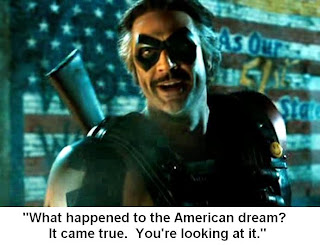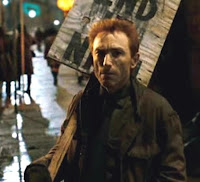Direct bidding means bypassing the 'percentage' that the dealer banks take. The banks hate it. It not only dents their vigorish, but it makes it more competitive in pricing the auction, which cuts into profits as well.
Today's Ten Year Auction was a bit weak, with Direct Bidders down as a percentage.
I have heard that more firms that are not PIMCO class in size are seeking to become Direct Bidders because of the price gaming that is going on with the Primary Dealer Banks serving as intermediaries.
By way of information, 'indirect bidders' are often considered a proxy for foreign purchasers from the official sector.
The Treasury auctioned $25 billion 10-year notes on 10 February 2010.
The high yield was 3.692%, which was 3+ basis points lower than the 1pm "When Issued" yield.
The bid to cover ratio, a measure of auction demand, was 2.67 bids submitted for every one accepted by the Treasury. This compared to a 3.0 BTC in the last 10yr auction
Dealers took 53.3% vs. 53.2% last time
Direct Bidders took 12.9% of the issuance. Previously 17.2%
Indirect Bidders were awarded 51.2% of the auction, vs 52.9% last time.
For some interesting background reading on some relatively recent changes in the bidding process and the definition of indirect bidding made by Treasury, read Smoke, mirrors and Treasury sales by Izabella Kaminska.
ForexPros
Angry US bankers seek curbs on direct bidders
By Emily Flitter
2010-02-09 17:18:22 GMT
NEW YORK, Feb 9 (Reuters) - Two minutes after the U.S. Treasury Department closed a multi-billion dollar debt auction last month, one banker was angrily punching in numbers of a hotline he'd found on the Treasury's Web site.
Primary dealers, including his bank, had just been blindsided by a large order from a group of so-called direct bidding firms whose presence is growing.
Financial firms acting as direct bidders are sapping profits for the big banks that have long seen themselves as the main intermediaries in the sale of government debt.
Primary dealers say direct bidders need tighter control given risks they could make auctions more volatile and expensive for the U.S. government at a time when it is borrowing record amounts to fund its programs.
The U.S. Treasury, however, says it supports broader access to auctions on grounds it raises competition and cuts costs.
The banker, who did not want to be named for this story, said he called Treasury to find out more about the firms in this group: He wanted to know how many had bid that day and what the standards were for allowing them to participate.
Primary dealers say a large direct bid in an auction makes it harder for them to properly price their own bids for Treasuries ahead of time. If primary dealers guess direct bidders will turn out in force for an auction, they could choose to pull back from a portion of their bids. They say Treasury auctions could begin to show less stable results. This would likely raise borrowing costs for the U.S. government.
"Because of the direct bid, determining the accurate price in the auction becomes more problematic. If it becomes more problematic fewer people will be willing to put capital at risk for size in the auctions," said Ian Lyngen, senior government bond strategist at CRT Capital Group in Stamford Connecticut.
Some primary dealers are asking the Treasury for limits on the percentage of direct bids that can be placed in a given auction. This, they say, would cut down on the level of uncertainty that has taken hold ahead of auctions recently.
WHY SO ANGRY?
On the day the angry banker made his phone call, direct bidders took down more than 17 percent of a $21 billion auction of 10-year notes, a far higher portion than normal. Direct bidders took 8.9 percent of the December 10-year note auction, and in November their bids made up 4.5 percent of the total. Similarly, January's three-year note auction saw direct bidders take 23 percent, while they accounted for only 2.9 percent of the December three-year auction.
"More and more buy-side accounts are so starved for yield that they're trying to go around the dealers," said Chris Whalen, co-founder of Institutional Risk Analytics. "Why should PIMCO go through a primary dealer?"
But despite the constant communication between these big banks and the government, they can't hope for much change.
"We support broad access to the auction process and we think that this is a good thing from the standpoint that it breeds competition and helps us achieve our goal of financing the government at the lowest cost over time," said Matthew Rutherford, the deputy assistant Treasury secretary for federal finance, speaking to reporters at last week's quarterly refunding announcement.
The direct bidder issue is one on which the primary dealers have little leverage in persuading Treasury. Despite the record size of recent Treasury issuance, investors are still snapping up U.S. government debt, creating healthy demand that has led to smoothly executed auctions.
This means the Treasury Department has little incentive to do more than listen to primary dealers' complaints about direct bidders.
"I think they like having a larger number of people with access to their auctions," said Rick Klingman, managing director of Treasury trading at BNP Paribas in New York. He explained that in the event of a disaster such as the 9/11 attacks, which knocked out New York firms' systems, a broader network of direct bidders could step in and make sure an auction went smoothly.
There are few details on the makeup of the group of direct bidders available to the public. Treasury does not disclose the number of firms authorized to participate as direct bidders, and there's little information available to indicate the potential size of firms that have direct bidding terminals.
Primary dealers aren't afraid to speculate on who the mystery bidders might be. Some posit they are smaller securities firms that are preparing to apply to become primary dealers, while others say those firms aren't well-capitalized enough to make much of a dent in a single auction.
Current List of Primary Dealers with the New York Fed
BNP Paribas Securities Corp.
Banc of America Securities LLC
Barclays Capital Inc.
Cantor Fitzgerald & Co.
Citigroup Global Markets Inc.
Credit Suisse Securities (USA) LLC
Daiwa Securities America Inc.
Deutsche Bank Securities Inc.
Goldman, Sachs & Co.
HSBC Securities (USA) Inc.
Jefferies & Company, Inc.
J. P. Morgan Securities Inc.
Mizuho Securities USA Inc.
Morgan Stanley & Co. Incorporated
Nomura Securities International, Inc.
RBC Capital Markets Corporation
RBS Securities Inc.
UBS Securities LLC.



































